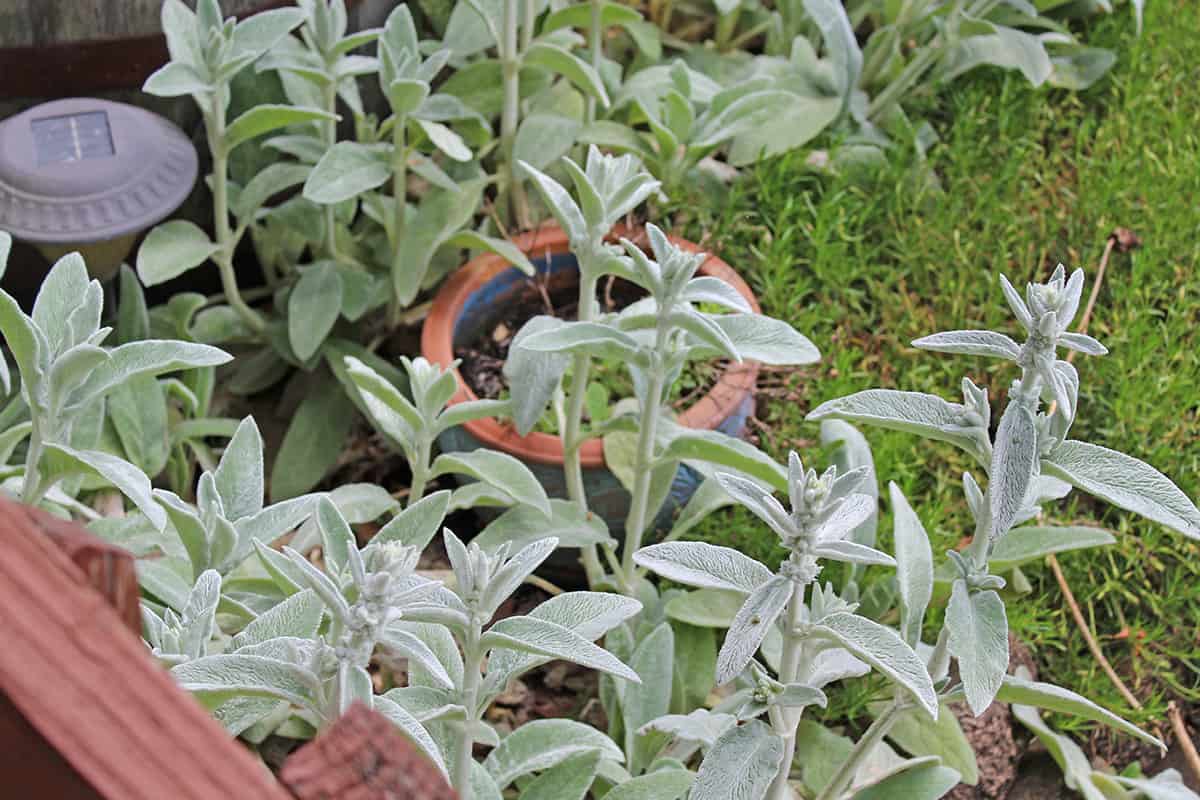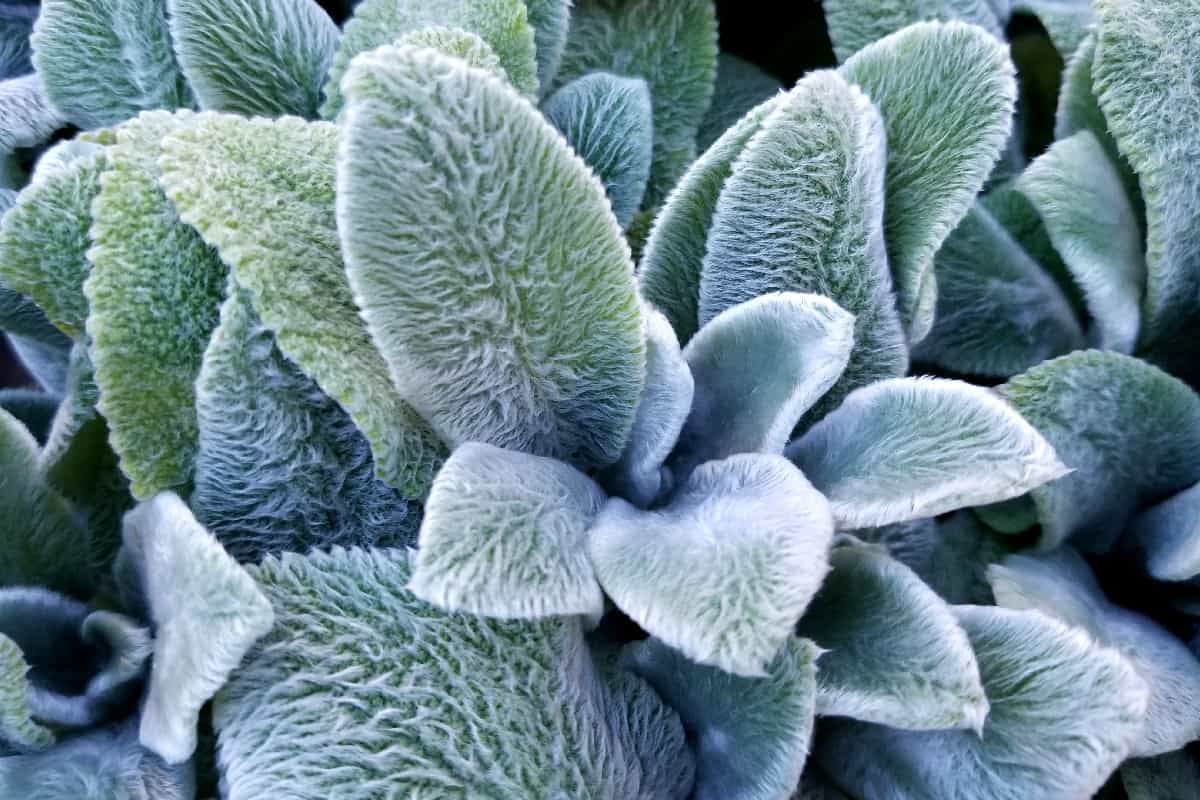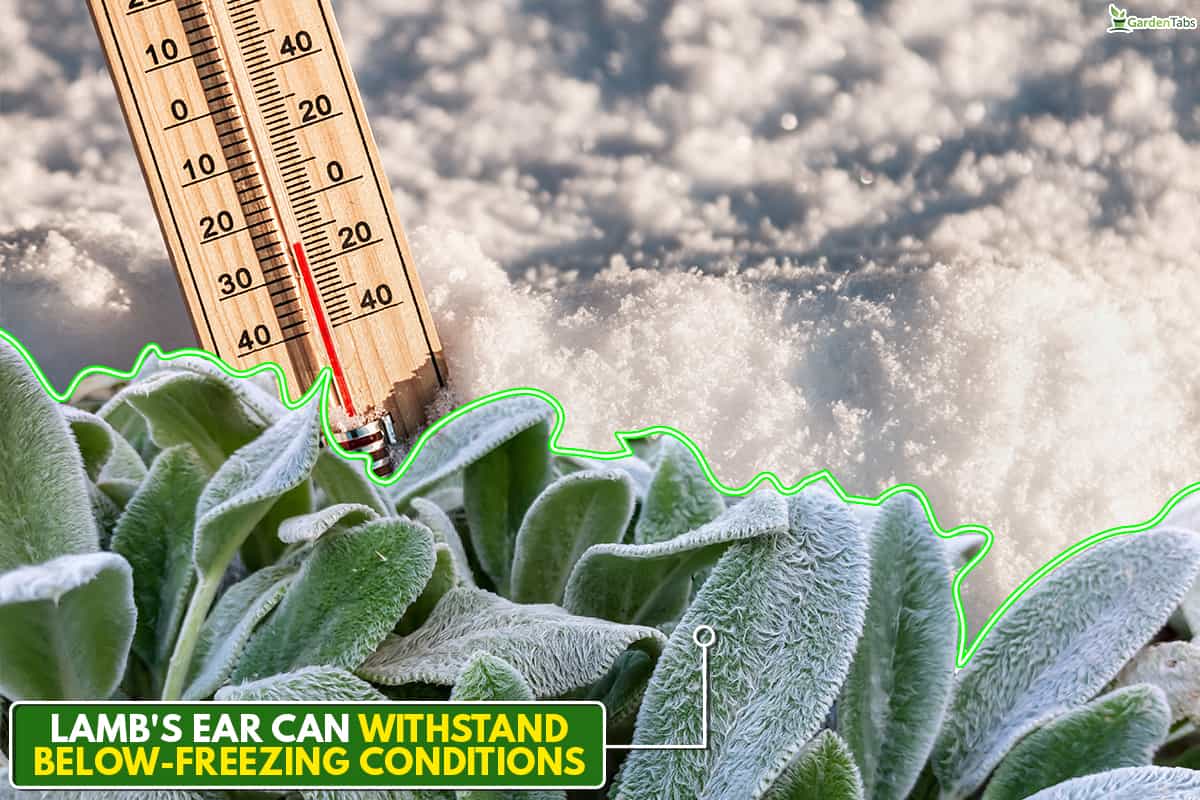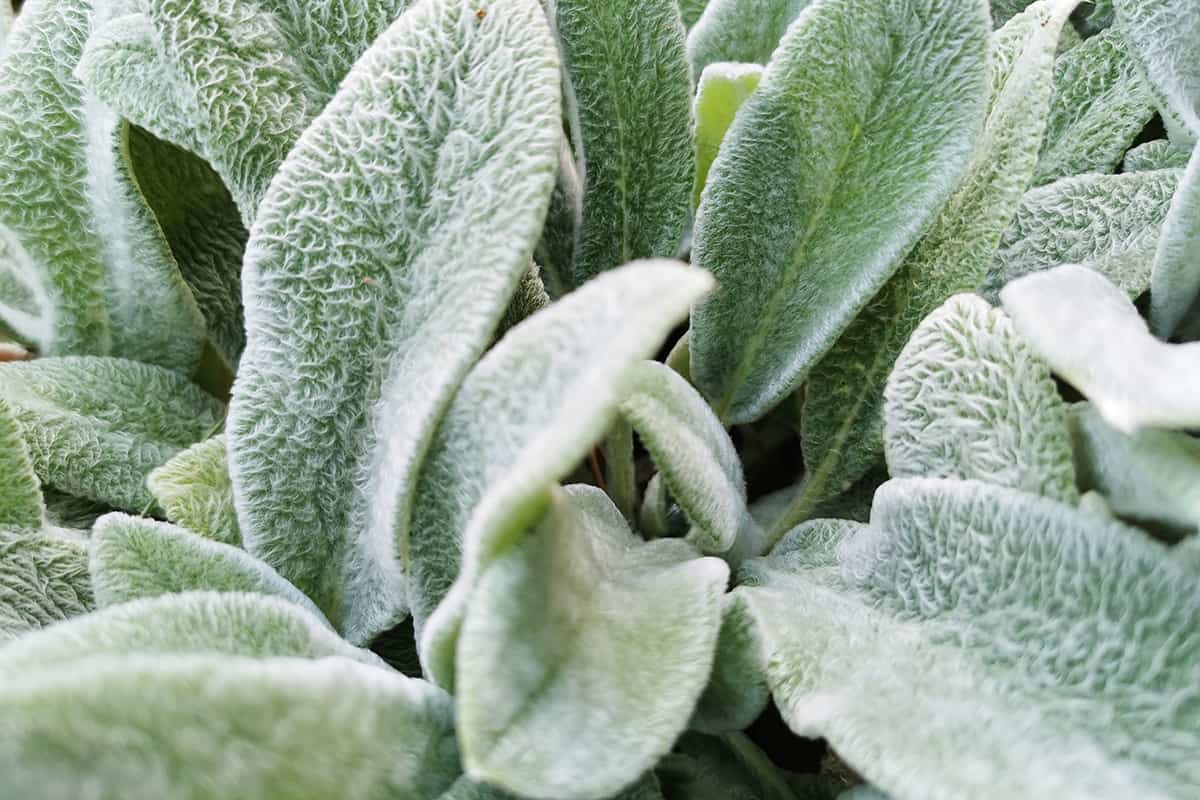Figuring out the best way to care for your plants during winter can be confusing. For example, do you have a lamb's ear growing and don't want it to die in the cold? What is the best way to overwinter this fuzzy perennial species? Should you bring it indoors during intense winter weather?
Well, we've researched this topic thoroughly and have the answers below.
Depending on where you live, you may be able to leave your lamb's ear out in the winter with no problems. Since this perennial species is hardy down to USDA zone four, it has an impressive cold tolerance.
However, in zones below four, we recommend digging up your lamb's ear, dividing it into clumps, and replanting them when spring arrives. You can also keep lamb ears in pots and move them indoors during colder periods, so this isn't always too difficult.
As we start this article, we will cover all things growing lamb's ear and discuss how to prepare one for winter. Whether you're new to this perennial plant, have one in your landscape, or need additional help, we've got your back. With that said, let's dive right into this topic!
What Do I Do With My Lamb's Ear In The Winter?
If you have lamb's ear in your garden and live in USDA zone four or higher, you don't need to do much to prepare it for winter. Luckily, this perennial plant can withstand cooler temperatures, often rebounding in the spring.
As we said, you can keep lamb's ear in the soil year-round in zone four or above, so that's good news for most gardeners. However, if you're in zone three or lower, that's when you need to make winter plans.
First, assess the size of your lamb's ear. If you have the plant in-ground, you'll need to dig it up in the later fall and move it indoors.
From there, we recommend dividing the lamb's ear into clumps and storing them in a warm place. This can be inside your home, on a screened/enclosed patio, or in a heated garage.
Once the weather improves, you can bring those clumps back outside and plant them. Generally, you want to wait until the soil thaws, which could be as late as April or May for some.
So, if you're in a place with somewhat cold winters but nothing crazy: your lamb's ear can stay outside.
Do You Cut Lamb's Ear Back For Winter?

Yes. For outdoor lam's ear, it can be helpful to trim back your plant before winter. Generally, a lamb's ear will go dormant if the temperatures drop below 30-40 degrees.
In this situation, you can expect your plant's foliage to discolor and your lamb's ear to look dead. Luckily, as long as the weather isn't dipping below zero, your plant will return to life in the spring.
Like most perennials, a lamb's ear won't stay green 365 days of the year. Of course, in warmer USDA zones, it is possible (and likely) for lamb's ear to keep its color throughout the four seasons.
Therefore, more tropical environments will warrant year-round growth and health. Some experts suggest cutting lamb's ear down to the soil if it stays all year outdoors, but this isn't required.
However, cutting back your plant an inch or so before winter can be beneficial, as this promotes new shoots in the spring. Regardless of the size of your lamb's ear, try and be more gentle with this species.
Since this plant is considered an herb, you don't want to be too aggressive in winterizing it.
Check out our post here: Should Lambs Ear Be Cut Back In The Fall?
How Cold Can Lamb's Ear Get?

Interestingly enough, a lamb's ear can withstand below-freezing conditions. As we mentioned, this herb can stay outside down to USDA zone four, which covers a significant amount of land in the United States.
According to Central Texas Gardener, you can sometimes get away with little protection on a lamb's ear during winter. This plant is pretty self-sufficient, often falling dormant to stay alive through freezing periods.
On top of that, your lamb's ear will be okay during snow and other inclement weather, as this tends to happen in the 20s and 30s.
The key to keeping lamb's ear alive through winter is getting it ready before the temperatures drop. For example, it could be worth it to trim down your lamb's ear to help it gear down for winter.
Pruning your herb can also help it save energy, which it will need plenty of in the spring. Perennials are known to begin winding down their growth in the late summer into fall, which is the same for lamb's ear.
So, expect your plant to survive a few (or many) freezing nights.
Can Lamb's Ear Survive Freezing Weather? What If It Snows?

Yes! Luckily, your lamb's ear will be okay if the temperatures drop to or below freezing. As we covered, this herb is cold hardy down to below-freezing, making it fine to have outdoors.
Many experts claim that it's perfectly normal for a lamb's ear to shrivel up and look dead until the spring. Therefore, if you notice yours lose its leaves and greenery, this is no need to worry.
You should notice your plant gearing up for the spring and new sprouting around March/April. HGTV recommends removing the dead foliage from your lamb's ear in the spring to make way for newer growth.
With that said, one thing lamb's ear can't withstand through winter is boggy/over-saturated soil. If your garden sits in a wet area or you water through colder periods, this is a sure way to kill your lamb's ear.
Regardless of the season, you don't want to ever soak a lamb's ear to the point its ground becomes soggy. In winter, this can send your plant into shock, killing it before spring can even arrive.
So, drier conditions through the fall and winter work best for lamb ear.
Should I Cover My Lamb's Ear During Winter?

In general, it isn't necessary to cover a lamb's ear during the winter. Remember, this herb species is pretty hardy in the cold, making a thermal cover somewhat redundant.
If you live in zone four or higher, there is no need to purchase a cover and use it on your plant. Doing this may trap too much moisture in your plant, causing it to freeze and die over the next few months.
However, if the forecast calls for extreme cold (-20 or lower), you might want to invest in a cover. Some layer of protection can help keep a lamb's ear from dying in the harsh cold, so this isn't always a bad idea.
Since USDA zone four spans from Montana, Wyoming, North Dakota, South Dakota, Minnesota, and Wisconsin and Eastern states such as Northern New York, New Hampshire, and Maine, your plant should expect some cold conditions.
The nice thing about this species is that it doesn't give up easily. Unlike many herbs, a lamb's ear doesn't respond negatively to the cold unless excess water is in the soil.
Too much moisture is what you need to be concerned with if you have a lamb's ear: not the cold.
Should You Water Lamb's Ear In The Winter?
Depending on how dry the soil is around your lamb's ear, that could mean it's time for water. In general, you don't want to give a lamb's ear too much moisture in the cooler winter weather.
However, your plant still needs water to live, so watering is crucial. According to experts, you want to wait to water a lamb's ear until its ground feels very dry.
So, if you put your hand on the soil near your plant and it feels bone-dry, it's time for some water. Additionally, you might need to ramp up moisture if the weather warms up faster than usual or hold off if spring comes late.
The key to growing this plant successfully is moderation. Whether watering, fertilizing, or pruning: lamb's ear doesn't respond well to aggressive gardening.
On top of that, if you have a drip irrigation system, you might want to keep that running during winter to prevent overwatering your herb.
Especially if it snows, too, there will be a lot more moisture in the soil than usual, which can become an issue for your lamb's ear. Less is always more!
Should I Keep My Lamb's Ear Inside During The Winter?

Unless the winter where you live gets colder than -15 to -20 degrees Fahrenheit, there's no need to move your lamb's ear inside for the winter.
As we mentioned, this species is incredibly cold-hardy, often unfazed by freezing temperatures. That said, if you have extreme wind chill or blizzard conditions coming, it might be worth it to relocate or cover your herb for the upcoming storm.
If your lamb's ear is potted, moving it inside will be helpful. However, for outdoor plants, you may not want to dig them up over a single storm. Instead, use a thermal cover to protect them until conditions improve.
To Finish Up
Whether you have a lamb's ear growing in your garden or want to plant one, it's always good to understand their cold tolerance. We found that this species is winter-friendly, surviving outside down to USDA zone four.
That said, you should prune back a lamb's ear in the later fall to prep it for winter and possibly dig it up, divide it, and store it indoors until spring.
Remember, USDA zone four gets down to -20 degrees in harsher conditions, which should be okay for the lamb's ear. Therefore, your plant only needs to be removed from the soil if you're in a colder location.
While we have you, check out these related articles below!
17 Indoor Winter Plants That Bloom With Gorgeous Flowers
Should I Cover My Garden Or Garden Soil In The Winter? Do I Have To?

